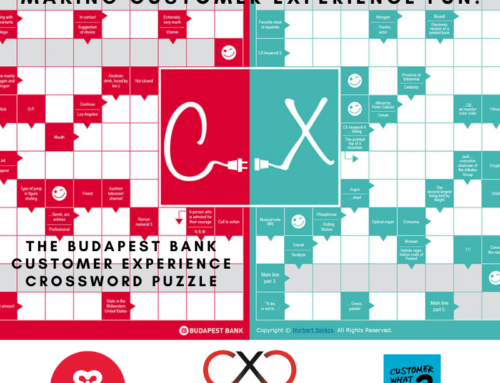
All CX professionals have a plan. It is what defines us as passionate leaders in our field. We have multiple ideas in our minds of what we want to do and how we want to do them when we enter an organisation for the first time. Joining an organisation at the start of its CX journey is a little like putting a six year old with a sweet tooth in an unmanned sweet shop!
Many of us take up a CX related role in a business for a reason – because the business is in need of specialist expertise to support its business strategy. The intent of that strategy is likely to involve a greater focus on the customer. This all sounds great. It can therefore be very tempting for the over enthusiastic CX professional to storm in like an excited puppy. I have been accused by former employers of being emotionally immature – I would like to think that they misunderstood my passion and enthusiasm for immaturity – some would disagree!!
All business improvement professionals – whether they be management consultants, process improvement specialists, or CX professionals run the risk of running too fast – getting carried away with the plethora of potential opportunities laid out in front of them. Without wanting to state the obvious, whilst enthusiasm and passion should never be stunted (even when being called immature!!), for us to be as effective as possible, we must be expert at guiding our ideas and plans at a pace the organisation we are working within, or for, can cope with.

I have written a blog in the past that describes the ‘ups and downs’ of our profession (https://ijgolding.com/2012/08/14/you-cannot-be-serious-why-cx-professionals-must-never-give-up/) – it is common for the CX professional to identify many potential actions that are so obvious!! However, jut because they are obvious to you, it does not mean they are to the people you are trying to help. I have learned (sometimes painfully) over the last few years, that it pays to slow down and pace yourself!
Using the running analogy, in my personal life, whilst not a great long distance runner, I am a committed one. My big issue with running is that I always, and I mean always, go out too fast. By mile 9 on almost every one of the 21 half marathons I have run to date, I have hit the wall – however much I tell myself that I need to slow down a bit, my brain rebels!! My personality is such, that my running behaviour can spill over into my professional behaviour. There is nothing wrong with my intent or motivation, but the end result can suffer.
When it comes to CX, I have found that working to a framework has helped me to compartmentalise my approach, and thus have the ability to take things step by step. My framework focusses on three pillars (as I call them)
- Strategy – what is the business proposition? why do customers transact with them? what is the organisations reason for being?
- Measurement – do we know how capable we think we are at delivering the proposition? Do we know how good our customers think we are at delivering the proposition? Do we know the key priorities for improvement in our customer journey?
- Engagement & Advocacy – are people fully engaged with our business and its proposition? Are employees advocates (fans) of the brand? Are people appreciated and recognised for the work they do?
There is no particular order in which to tackle these pillars – in fact, every organisation will be completely different. Some will be more advanced in one pillar than another. If you try and tackle all pillars at once, you may be guilty of running too fast. This is where I recognise that you need to determine what the CX framework priorities are for the business you are working in. For example, if the business does not quite know what its proposition is, it may be best to influence senior leaders to clarify it, prior to doing anything else. It is difficult to turn employees into ‘fans’ of a brand, if they do not quite know what the brand exists to do!!
Ultimately, we must always remind ourselves that driving a CX programme can take a significant amount of time – especially in a business that has never been customer centric before. When I mean ‘take time’ , I mean years! Treading carefully, and slowly bringing people at all levels of the organisation with you, will reap huge benefits in the long run. Going too quickly may well scare the pants off people, and set you back. You can not address the three pillars above in three months!

As a CX professional, you must believe in yourself, and in your approach. There will always be setbacks, but if you gently encourage, influence, guide, educate, and teach the business you are working in, step by step, you will ultimately achieve both yours and their goals. So even if you think the things that need to be done are blindingly obvious, and must be done by next week – take a deep breath – slow down, and ensure that you are going at the right pace.
As always, your comments are very welcome.






Leave A Comment